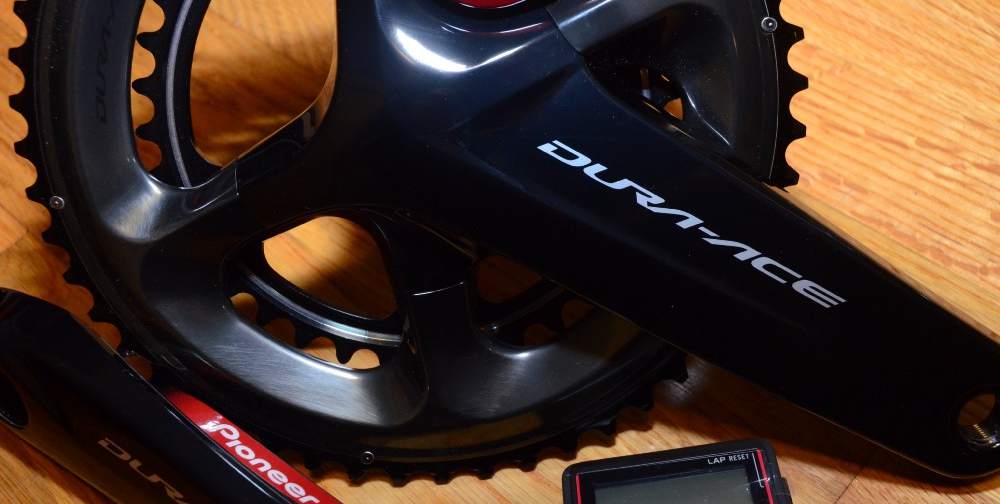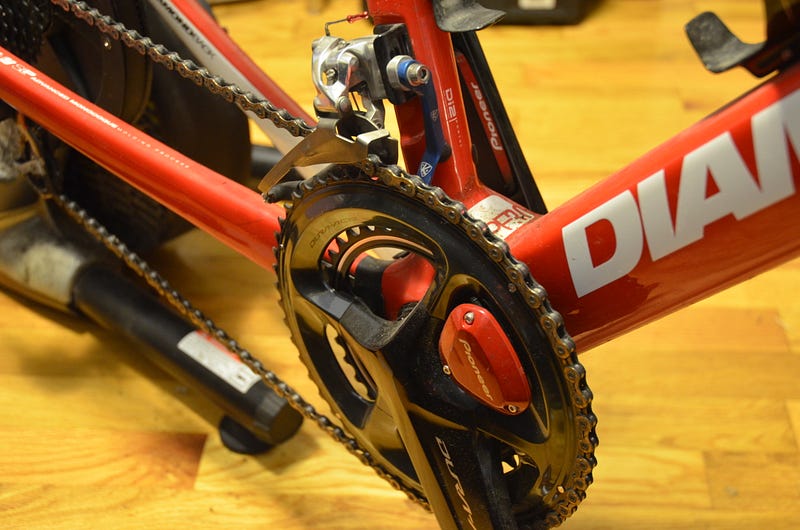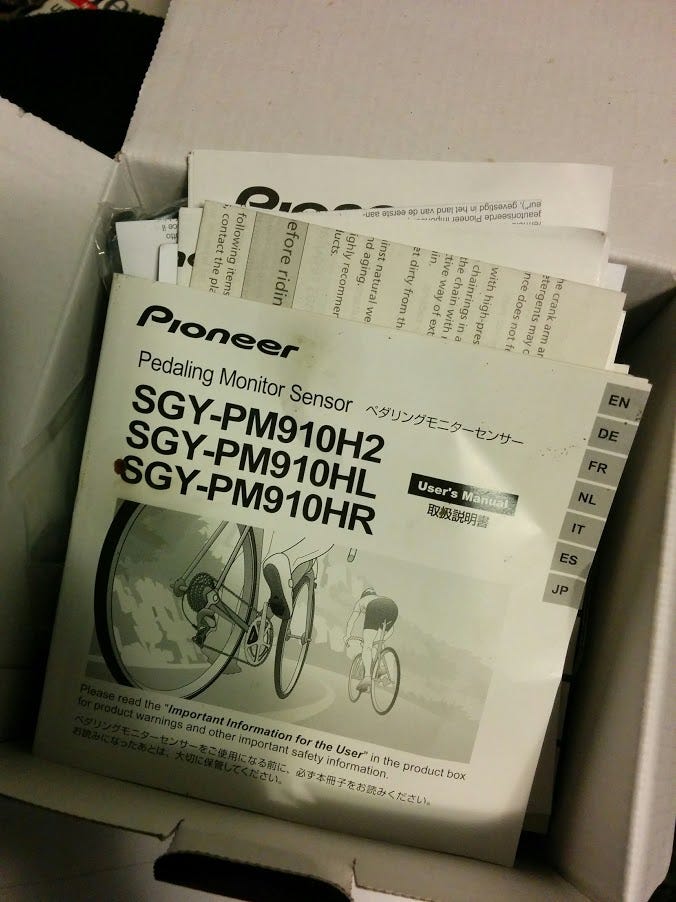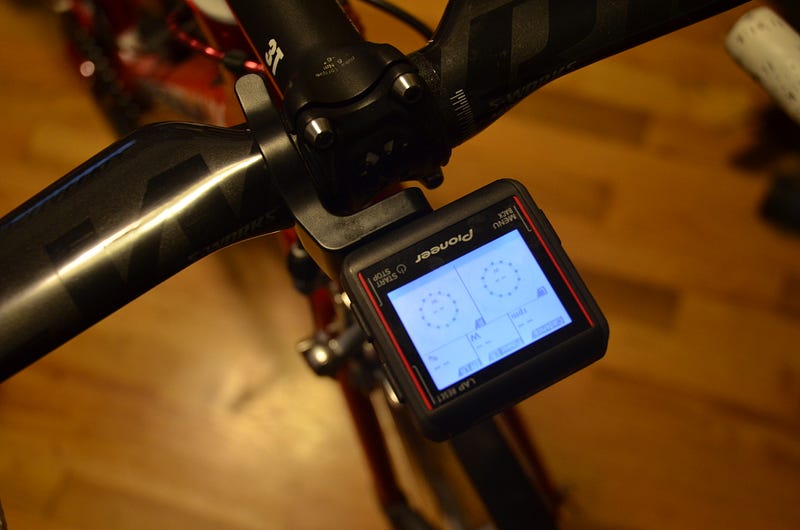
Ed note: Matt wrote this on Medium Bicycles and I’m sharing it here so you all see it. Also, good that Matt is back on the back.
When we last saw our protagonist, he was one-legged, off the bike, and unpacking the new Pioneer Power meter device.
Now we return to find him hale, hearty and well healed.
Well, ok. Not really.
One and 1/3 legged, still limping a fair bit, and back on the bike, but only in the cozy confines of the living room.
But there is now a power meter installed on that bike.

Let’s talk a bit about that, shall we?
I’ve had a pretty fair bit of experience with power meters and their respective head units. I own, have owned, or have used devices from SRM, Power Tap, Stages, Quark, LeMond, Garmin, Polar… a lot of different devices. I have done the installation, calibration, and maintenance for all of them myself. I like to think I’m pretty good at it.
I’d heard from others that the Pioneer power meter was a bear to install, but I’ll admit it; I thought they were being hyperbolic. Maybe not so much.
There are basically two separate meters in this unit, and you need to make sure they’re talking to each other. While everyone else seems to be moving to inertial sensor technology, you still need to futz with magnets to get this thing working. Still, I was optimistic. There’s even a really simple sounding “quick start” page that comes with the device. How hard could this be?
Pretty damn hard, it turns out.
That one-page quick start procedure?
Didn’t work for me.
Not even a little. Goose egg. Nothing.
Strike one.
With no “quick start” in the offing, it was on to the not-so-quick version of the setup protocol.
Definitely wasn’t quick.
The manual for this thing (these things, really. I’m using both the crank-based meter, and the proprietary head unit) is in a bunch of languages, and as often seems to be the case with manuals in multiple languages, it’s probably easy to follow in the language it was originally written in. Unfortunately, that language never seems to be the one you’re trying to use.
OK, I’ll admit it. That probably is a wee bit hyperbolic. But the manual for this thing is over 230 pages long, most of it in languages you probably don’t speak, and you will discover that you have to constantly flip back and forth from section to section in order to make it through a complete install. Not super fun.

So, byzantine manual?
Check.
After about an hour of messing with things, I was pretty sure I had everything working and tried to ride-test the unit on the trainer.
No dice.
I got data, but it was way, way off, and the force vector analysis was… well… it was weird.
Strike number two.
Tried the whole setup procedure again, and bingo. Started working like a charm.

Frankly, I don’t know what I did differently the third time, but no third strike, safe on base. Suddenly everything was working perfectly.
This is the point in the process where most folks would simply shrug their shoulders and start riding. Gift horses and their mouths, right?
This being a review though, I did actually try to go back and figure out what the heck I had done wrong in the earlier install efforts. Not much luck.
I don’t know why the quick setup didn’t work, I kinda know why the second install was screwed up, I sorta have an idea why things did, finally, work the third time… but I’m not 100% sure about any of these, and at a certain point I did actually want to ride the darn bike this thing was attached to. So, onwards.
In summary, though? if you’re going to get one of these — and do the install yourself — be prepared for a slog through the manual, and the potential for a fair bit of frustration. Frankly, I’d suggest that for most folks, the prudent course of action is to pay someone else to do the install for you.
Turns out the rumors were right. “plug and play” ain’t the course of the day. Or at least it wasn’t for me. Your mileage may vary.
In part three, I finally get to go for a ride and collect some data.
TLD(on’t have any intention of)R(eading the next installment)?
I dig this thing. Sincerely. It’s cool.
Stay tuned
We're riding townies, adventure, and mountain bikes. Find recommendations on our store page. As Amazon Associates we earn from qualifying purchases.